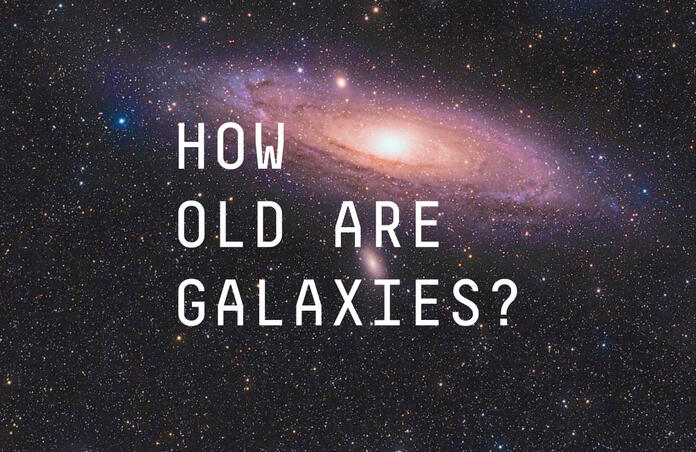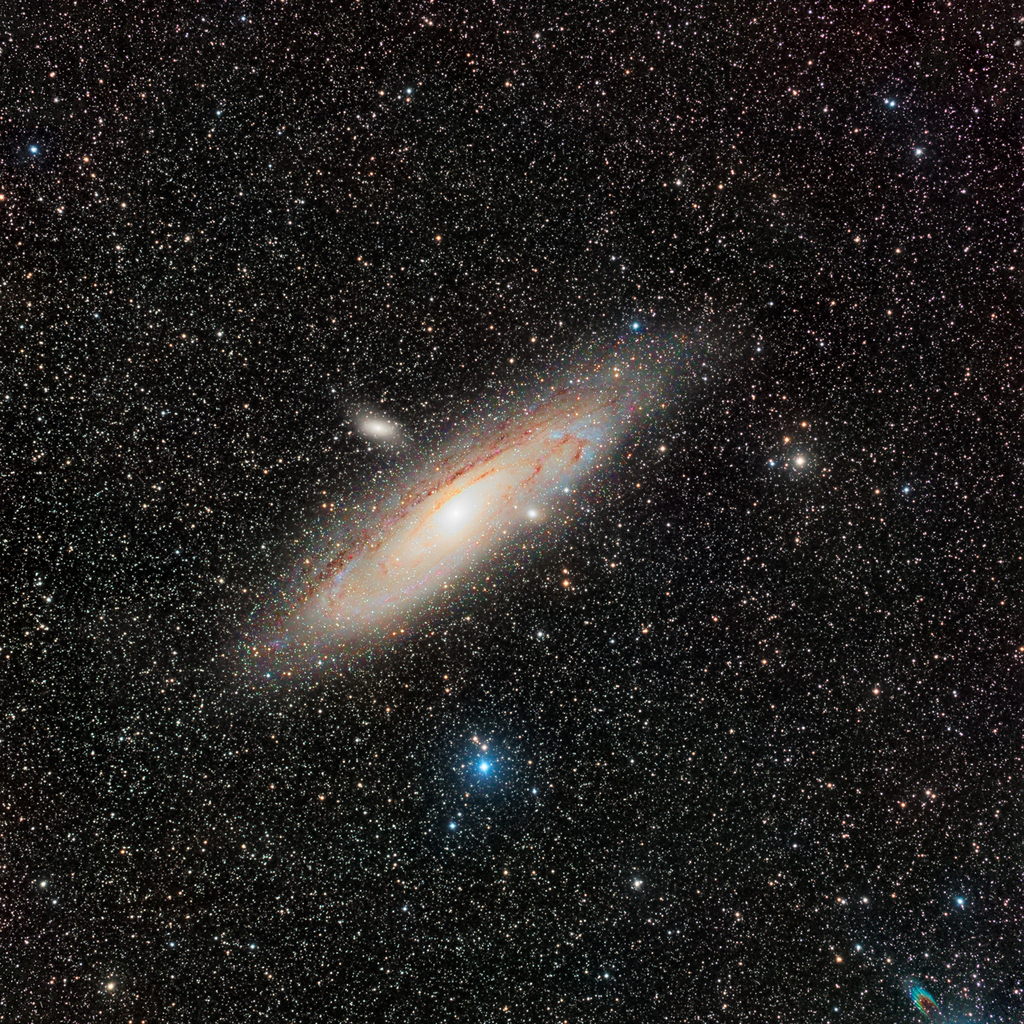How old is a Galaxy?

In What is a Galaxy, the different types of galaxies were presented. Let’s dig deeper and consider an important information for astronomers: the age of a galaxy.
In the current model of Cosmology, which is the study of the beginning and the history of our Universe, space and time evolved from an initial super-dense point. The “Big Bang” is the moment where this point, or singularity, started its expansion, about 13.8 billion years ago. Astronomers can still consider this growth today: the light reaching the Earth from galaxies experiences a phenomenon known as redshift. This is caused by the expansion of space itself, meaning that the wavelength of the light increases, thus appearing more red. Interestingly, there appears to be a force, the mysterious Dark Energy, that accelerates this expansion.
If you are observing a distant galaxy with Telescope Live, you will probably notice that images taken in the red filter will be the ones collecting the most light. On the contrary, our closest neighbour the Andromeda Galaxy is getting closer due to gravitational attraction (even if spacetime is expanding) and will collide with the Milky Way in 4.5 billion years; when you observe it, you might notice a slight blueshift.

Within 3 minutes of the beginning of the Universe, elementary particles like quarks and electrons have evolved into nuclei of Hydrogen (75%) and Helium (25%). As space expands and cools, atoms form, and 380 000 years after the Big Bang, light is able to travel freely – this is what can be observed as the famous Cosmic Microwave Background. Soon thereafter, stars can start to form and then galaxies - most galaxies are estimated to be between 10 billion and 13.6 billion years old. Another elusive substance ought to be mentioned here: Dark Matter, which only interacts gravitationally with “normal” matter, is thought to have helped in the formation of large-scale structures like galaxies and galaxy clusters.
There are various methods and models that have been devised in order to estimate the age of galaxies more precisely, however there isn’t a definite answer yet. What is likely that galaxies began with only a few stars and that as the star-formation rate accelerated, reaching a peak after around 3.5 bio years, these galaxies grew to be more like the ones we are used to see. Another interesting occurrence, which we already briefly looked at, is the collision of two galaxies: by creating computer simulations based on the modified structure of the merger, the date of the collision can be inferred.
An exciting prospect is that of high-tech space telescopes like the upcoming James Webb Telescope, which as described by NASA will be the “most powerful and complex space telescope ever built”. It will be gazing at the formation of the first galaxies and give further information about this fascinating but unresolved topic.
Are you ready to observe a galaxy? Try it with the One-Click Observation, or choose your target and submit an Advanced Observation on the webapp !
Cover Image:
Andromeda Galaxy, Kush Chandaria, 24/07/2020, Takahashi FSQ-106EDX4 Telescope
Image credits:
The Andromeda Galaxy, H. Ibarra-Medel, 13/10/2020 Takahashi FSQ-106ED
